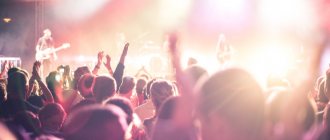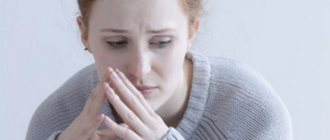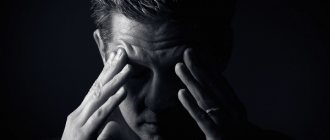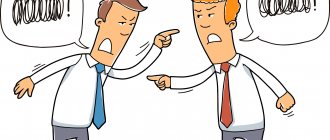Panic fear (FP) also occurs as an isolated condition, but more often it comes along with phobias, neuroses and panic attacks. Panic fears and phobias are ambiguous concepts. As you know, fears are useful for humans and help the human species survive. These are rational fears. The purpose of such fears is to warn a person about danger.
Statistics
Panic attack is a common phenomenon. It is believed that every 5 people suffered it at least once in their lives. However, no more than 1% of the population suffers from panic disorders. Women are 5 times more likely to experience anxiety attacks than men. The disease is diagnosed mainly at the age of 25-35 years. Although sometimes attacks occur in children, adolescents and the elderly.
Every 5 patients try to treat attacks of animal fear with alcohol or heavy psychotropic drugs. This leads to the formation of persistent addiction.
In fact, dealing with panic attacks is not difficult. Moreover, this does not always require taking psychotropic drugs.
conclusions
Symptoms and treatment of panic fear depend on the causes of the condition. If the reasons are psychological, then there is no need to worry, and even when there is a feeling that you are about to die, this is a deception, there is no threat. The disorder is successfully treated with the help of psychotherapy of various directions.
To make it easier to survive attacks, use relaxation methods and breathing practices. Don’t let the painful anticipation of the next attack take over your thoughts, and if an attack does happen, go through it to the end, intensify the symptoms and realize that nothing bad will happen. If this works, perhaps there will be no next attack, or it will not happen again very soon.
Theories of the origin of panic attacks
There are several theories that try to explain what happens to the body during an attack. Moreover, all of them are not without meaning.
Catecholamine theory
Proponents of this hypothesis believe that catechin hormones are the cause of panic fear. They are produced by the adrenal medulla. These include: adrenaline, dopamine, norepinephrine. Adrenaline plays a leading role in the development of an attack. It causes the nervous system to become more active and increases heart rate. This is necessary to ensure that all organs are washed in sufficient quantities with blood. At the same time, blood pressure increases and breathing becomes more frequent. The brain receives the maximum amount of oxygen at such moments. The body reacts to danger in the same way.
During a panic attack, catechins increase their numbers not only in the blood and urine, but also in the nervous tissue. It has been proven that with the intravenous administration of adrenaline, the same panic attack develops. Therefore, the more catechins in the human body, the higher the tendency for crises to occur.
Genetic theory
Panic attacks that occur in one identical twin have a 50% chance of occurring in the other. In 15-20% of cases, blood relatives suffer from them. Therefore, there is a theory that the disease develops due to disturbances in the structure of certain genes. This means that the child has a tendency to develop it from birth. Panic disorder will make itself felt as soon as favorable conditions arise for this, for example, severe stress is experienced, hormonal changes occur in the body, a person becomes seriously ill, etc.
Psychoanalytic theory
The famous S. Freud studied panic attacks. He and his followers were of the opinion that they develop in people who have an intrapersonal conflict that remains unresolved but suppressed. Lack of emotional release leads to cardioneurosis.
Behavioral theory
There is an opinion that panic attacks occur in people who suffer from an obsessive fear of drowning, getting into a disaster, etc.
Cognitive theory
Adherents of this theory believe that a panic attack is a consequence of a person’s misinterpretation of his own feelings. For example, they regard increased breathing and heart rate, which occurs in response to physical exertion or fear, as a signal of imminent death. This leads to them developing panic.
Start describing how this feeling of panic feels in your body and ask it to intensify.
- Name and voice all the sensations you experience in your body . For example: “ Feeling, you seem heavy and prickly to me, like metal. I feel like you are trying to eat me ."
- Now invite the feeling of panic to become even stronger and more unpleasant for you. Ask him to become even more intense.
The second step will remove any remaining resistance that remains and close your questions about how to treat panic attacks and anxiety.
Why this method is useful:
- In this way, fear will no longer feed through mental resistance and will begin to dissipate.
- An inner confidence will begin to grow that will tell you: “You are now in control of the situation, rather than the situation controlling you.”
After all, this is how a panic attack used to get to you. She used to convince you that you couldn't control your own life.
You should know everything about how to get rid of phobias on your own.
Development mechanism
- Under the influence of stress, adrenaline is released.
- The hormone provokes vasoconstriction, increases breathing and heart rate.
- Vasospasm leads to increased blood pressure.
- Carbon dioxide is eliminated from the body faster, which provokes increased anxiety.
- Low CO2 levels cause dizziness and numbness in the limbs
- Vessels spasm only at the periphery: in the skin, fatty tissue and muscles. All the blood flows to the vital organs: the brain and heart. The remaining tissues suffer from hypoxia, which leads to the accumulation of lactic acid in them. It enters the systemic bloodstream and increases panic.
Causes of panic attacks
A panic attack can be caused by any strong experience, upcoming surgery, fear of illness, etc.
Most often, an attack develops in the presence of mental disorders, but sometimes it can be caused by reasons such as:
- Myocardial infarction suffered by a person.
- IBS.
- Mitral valve prolapse.
- Childbirth.
- Pregnancy.
- Early initiation of sexual intercourse.
- Climax.
- Pheochromocytoma (tumor of the adrenal gland that produces adrenaline).
- Thyrotoxic crisis.
- Drug therapy: glucocorticosteroids, anabolic steroids, cholecystokin.
Panic attacks can act as symptoms of mental illnesses such as:
- Phobias.
- Depression.
- Schizophrenia.
- Schizotypal disorder.
- Mental disorders caused by trauma, for example, being in an accident or natural disaster.
- Obsessive-compulsive disorder. At the same time, a person is constantly haunted by the fear of illness or other disaster. As a result, he develops obsessive ideas. For example, he constantly checks the condition of electrical appliances, washes his hands too often, etc.
If a person is stressed all the time, or lives at an accelerated pace (this may be due to work), then he is more susceptible to panic attacks. In children, involuntary loss of urine or feces often occurs during an attack.
Provoking factors
Scientists have identified risk factors that increase the likelihood of a panic attack even in a healthy person.
These include:
- Maintaining a sedentary lifestyle. Lack of physical activity is especially dangerous for teenagers. Playing sports helps you get rid of negative thoughts and emotions, find peace of mind, and bring order to your thoughts. Physical inactivity leads to restlessness and increased impulsiveness, which leads to panic attacks.
- Excessive consumption of drinks containing caffeine. The nervous system is depleted under the influence of this substance.
- Smoking. Substances contained in tobacco smoke have a negative effect on human blood vessels and affect stress resistance.
- Holding emotions inside for a long time.
- Chronic lack of sleep. Excessive amounts of adrenaline and other hormones enter the blood, which leads to panic.
1st group. Disturbances in the usual way of life.
This group includes everything that makes a habitually comfortable life uncomfortable. For example:
- deterioration of relationships, conflicts, separation from significant people;
- serious illness or death of loved ones;
- moving to a new place of residence;
- voluntary or forced resignation from work;
- deterioration of financial situation or instability (unpaid loans and/or mortgages);
- litigation;
- prolonged lack of sleep, disturbances in the rhythm of day and night;
- overwork due to overload in the profession, study or everyday life;
- accelerated pace of life;
- overstrain when raising children;
- various somatic diseases;
- unbalanced diet;
- situations when children begin to live separately, etc.
These disturbances in living conditions always lead to anxiety and tension, usually aimed at restoring the disturbed conditions and relationships. If conditions continue to be uncomfortable, then anxiety becomes the foundation on which a panic episode can later occur.
Symptoms of a panic attack
A panic attack manifests itself with both physical and mental symptoms. They need to be considered separately.
Mental manifestations of a panic attack
Mental symptoms manifest themselves most clearly:
- A person has a feeling that his life or health is under threat.
- An acute fear of death appears. It is present in the first 2-3 attacks, after which it is replaced by fear of illness, heart attack, stroke, etc.
- There is a fear of going crazy.
- A lump forms in my throat.
- The perception of the world is distorted. It may feel like time is slowing down.
- A person looks at himself as if from the outside and cannot control his own actions.
- Sometimes the state approaches semi-fainting. Consciousness becomes clouded.
Some people try to hide or run away, while others, on the contrary, fall into a stupor.
The symptoms listed may vary. The same person experiences crises with a low emotional component, or attacks of pronounced fear, even to the point of passion. On average, they repeat once every 7 days. Sometimes attacks may not bother a person for months. Mild panic attacks can occur up to several times a day.
Physical symptoms
Physical manifestations of panic attacks include:
- Increased heart rate. Sometimes the heart beats so fast that a person feels as if it is “breaking out of the chest.” This symptom develops under the influence of adrenaline and dopamine. Normally, the level of these hormones increases when real danger arises. This is how the body prepares to run.
- Hot flashes or chills. These sensations are caused by the contraction of blood vessels penetrating the subcutaneous fat.
- Increased breathing.
- Dry mouth. It occurs due to stimulation of the autonomic nervous system.
- Sweating. In this way, the body cools itself independently in order to optimize energy consumption.
- Diarrhea or constipation. Abnormal stool occurs due to the fact that intestinal nutrition deteriorates against the background of vascular spasm.
- Chest pain on the left side.
- Coldness of feet and hands.
- Disturbances in the functioning of the digestive system: nausea, abdominal pain, vomiting, dilution of stool.
- Trembling in the hands and throughout the body.
- Dizziness, fog, some separation from reality, weakness. All these symptoms are caused by a decrease in the level of carbon dioxide in the blood and cerebrospinal fluid. It leaves the body faster due to rapid breathing.
The average duration of a crisis is half an hour. Sometimes it ends earlier. The end of the attack in children most often is excessive urination or vomiting. The patient feels tired, weak and depressed.
Sometimes similar symptoms occur with other diseases, such as stroke or bronchial asthma. However, there are still differences. The more severe the pathology, the worse a person feels.
Symptoms of an atypical panic attack
Sometimes the symptoms of a panic attack differ from the classic clinical picture. The person does not feel terrible fear. He is simply experiencing strong internal tension.
Physical manifestations may be absent altogether, or will be mild (there is a temporary malfunction in the functioning of one organ):
- Loss of voice.
- Deterioration of vision.
- Dumbness.
- Unsteadiness of gait.
- Feeling of stiffness in the hands.
Doctors call such panic attacks hysterical neurosis. Most often they occur in crowded places.
What can trigger an attack?
A panic attack can manifest itself in different ways.
There are 3 possible scenarios:
- The person does not suffer from any diseases. A panic attack occurs after nervous or physical stress, or after quitting a binge. Most often, people cannot find the objective cause of the attack, but they accurately indicate the time of its debut.
- If a person suffers from prolonged depression or asthenic syndrome, then attacks most often manifest themselves as physical symptoms. They do not carry a bright emotional coloring. A panic attack with a full set of symptoms develops after suffering stress, surgery or illness.
- A person’s anxiety can cause an attack to develop.
What can aggravate the course of an attack?
Some people experience panic attacks worse. As a rule, a similar situation is observed in fearful individuals with increased anxiety. Artistic and dramatic people, as well as people with unstable psyches, are prone to severe panic attacks.
Scientists have found that what matters is how a person interpreted his first panic attack. If he perceived it as a heart attack, or for some kind of disease, then the attacks will be repeated frequently. They will become the basis for the emergence of obsessive fears.
The more emotional a person was during a panic attack, the more afraid he will be of the next attack.
What can ease the course of an attack?
Panic attacks are more easily tolerated by a person if he has the following personal characteristics:
- Independence.
- Internal fullness.
- Hard work.
- Coolness.
- Having your own point of view.
Nocturnal panic attacks
Most often, panic attacks develop in people at night. Moreover, strong-willed and restrained people are susceptible to them. On the eve of an attack, a person cannot fall asleep for a long time; he lies in bed, overcome by various anxieties and thoughts. This becomes a trigger for the development of an attack. Sometimes a person wakes up in the middle of the night, experiencing a feeling of terrible fear. He tries to run away and hide, although he doesn’t even understand in which direction to move and what exactly to run from.
The attack debuts after 24:00. It can go on for a long time. After sunrise, the attack goes away on its own. Relief comes from communicating with another person. Sometimes the panic subsides after the lights turn on.
The symptoms of attacks that occur at night are no different from daytime attacks. Although sometimes they are more intense. Many people who experience nighttime panic disorder do not see a doctor. They believe that the fear was caused by nightmares, and not by illness. This point of view is fundamentally wrong. You need to contact a specialist.
A person suffering from nighttime panic attacks does not get enough sleep. The entire next day he will experience drowsiness, fatigue and apathy. This leads to poor performance and inattention. If professional activity involves operating machinery, then there is a real threat to life.
The fear of another attack prevents him from falling asleep normally, and during the day he suffers from drowsiness. Inadequate rest leads to exacerbation of chronic diseases. This contributes to the worsening of mental disorders. In addition to panic attacks, the patient will begin to suffer from depression, neurosis, etc.
Panic attacks during menopause
Women over 45 years of age develop symptoms indicating the development of menopause.
These may resemble signs of a panic attack:
- Flushes of heat to the upper body.
- Hyperemia of the face, neck, chest.
- Excessive sweating.
- Headache.
- Increased heart rate.
- Difficulty falling asleep.
- Drowsiness during the daytime.
- Excessive irritability.
You can distinguish the symptoms of menopause from the symptoms of a panic attack by the following signs:
- No panic fear
- The absence of anxiety, which does not allow you to think about anything else.
- Improved well-being while taking hormonal medications. These medications are prescribed by a gynecologist.
Panic attacks are not uncommon during menopause. They bother every 6 women.
The risks of their occurrence increase in the presence of the following violations:
- Migraine.
- Diseases of the heart and blood vessels.
- Emphysema.
- Allergy.
- Thyrotoxicosis.
- Past panic attacks that preceded menopause.
Factors that can trigger attacks include:
- Emotional shock.
- Alcoholism.
- Chronic fatigue.
- Physical overload.
During menopause, the female body is especially vulnerable, so panic attacks can be triggered by even minor experiences.
Vegetative-vascular dystonia
Dystonia is characterized by an imbalance between the sympathetic and parasympathetic nervous systems. This failure can occur at any age. The triggering factor is often stress, injuries, illnesses, and blood loss. A hereditary predisposition to VSD should not be ruled out.
Vegetative-vascular dystonia always accompanies panic attacks. Therefore, the diagnosis in the patient’s card may sound like “VSD with panic attacks.”
The clinical picture of dystonia is varied. The leading symptom is often chest pain, heart rhythm disturbances, hyperhidrosis, surges in blood pressure, asthma attacks, and irritability. Patients present these complaints to the doctor. However, during the examination, no pathologies of the internal organs were detected.
Against the background of VSD, panic attacks often develop. The attacks are accompanied by tremors of the limbs, the appearance of cold sweat, hot flashes, numbness of the arms and legs. A person experiences an animal fear of death.
A diagnosis of “VSD with panic attacks” indicates that a person’s internal organs are healthy. Therapy should be aimed at combating the attacks themselves.
Symptoms that occur between attacks
In addition to the symptoms that occur during a panic attack, a person may be bothered by the following health problems:
- Continuous feeling of anxiety.
- Fear of being in the same situation as the first panic attack.
- Formation of phobias.
- Chronic fatigue syndrome. The person will experience constant weakness, his cognitive functions decrease, and tearfulness increases. He is always in a bad mood.
- Depression. The person will be focused on his inner experiences.
- Hysterical seizures, which may be accompanied by loss of consciousness.
- Fear of the future.
- Having obsessive ideas and thoughts.
With panic attacks provoked by VSD, symptoms such as:
- Feeling of acute lack of oxygen.
- Chest pain.
- Dry mouth.
- Nausea, diarrhea, bloating.
- Increase in body temperature to 37.5 °C. Low-grade fever is not characterized by any other signs of infection or cold.
- Chills.
- Dizziness.
- Excessive sweating.
About medications
We are not supporters of any medical sedatives.
Unless a person believes that this is the only thing that will cure him, then medications will help.
Because faith is a trump card for everything .
If you feel that anti-anxiety medications are the only way to treat panic attacks and neurosis, then it is normal to go out and buy them.
But again, this is not a solution to the problem. The problem is in our head.
What to do during a panic attack?
When a panic attack develops, you should adhere to the following recommendations:
- Measure body temperature, blood pressure, pulse, breathing rate. All indicators will be overestimated. However, knowledge of these health parameters will make it possible to distinguish a panic attack accompanied by a sympathoadrenal crisis (high blood pressure, rapid pulse) from a panic attack with a vagoinsular crisis (the main symptoms are caused by excessive activity of the parasympathetic nervous system). In the latter case, the pulse will be slow. Depending on the type of panic attack, the rules for providing assistance to the patient will differ.
- Think about the medications the person was taking. Medicines used to treat diseases of the cardiovascular and nervous system can trigger a panic attack. It may be necessary to refuse further therapy. If a person is sure that the attack is caused by medications, then you can take Smecta, Activated Charcoal or another similar drug. Be sure to read the instructions for use. It is possible that it contains very specific instructions.
- When your heart rate increases, you need to start coughing. This will bring it back to normal.
- If pain appears in the chest on the left side, you should not wait until the attack ends. You need to take 1 Aspirin tablet and call a medical team.
Calling an ambulance is required in the following cases:
- The attack lasts more than half an hour.
- Before the attack began, hallucinations arose, there was a haze before the eyes, and the sense of reality of what was happening disappeared. In this way, both migraine and temporal encephalopathy requiring immediate treatment can manifest themselves.
- The face becomes asymmetrical, and the movements of the limbs are uncoordinated. “Goosebumps run across your skin.”
- Body temperature rises, sore throat and muscles appear,
- The patient was previously diagnosed with bronchial asthma. Before the medical team arrives, he needs to take the drug that he always used to stop attacks.
- If your blood pressure rises and your heart rate increases to 65 beats per minute, you need to take Anaprilin. A 10 mg tablet is placed under the tongue. This will ease the work of the heart, the pressure will decrease, and the pulse will normalize. Under the influence of the drug, the body stabilizes the functioning of the sympathetic nervous system.
- If a panic attack was provoked by an attack of tachycardia, then you can use a simple technique. The thumb of the left hand should be raised up, and the remaining fingers should be folded into a fist. At the base of the thumb a fossa is formed, represented by three tendons. You need to place the middle finger of your right hand in it and feel the pulse. Holding this section, you need to count to 60. The rate of counting should not exceed the speed of movement of the second hand. After such actions, the panic attack should end. If a person feels that his pulse is very low, it is necessary to call a medical team. Before they arrive, you need to focus on the depth and frequency of your breathing.
- You need to inhale deeply, taking in a count of times. After 2 seconds the air is exhaled. Gradually increase the depth of inhalation, bringing the count to four. You need to mentally imagine how air fills your lungs. You need to breathe with your stomach.
- During a panic attack, you need to force yourself to smile. Let your mouth stretch into an unnatural smile. Facial expressions are firmly connected to the brain, so it will soon react to them with positive emotions.
- To distract yourself, you need to concentrate on an unusual activity. For example, you can start counting pigeons.
- The person must convince himself that the panic attack is not life-threatening and will end soon.
What it is
A panic attack is a causeless, debilitating attack of panic or anxiety, accompanied by a feeling of fear and various physiological symptoms.
To understand what a person feels at such moments, imagine the situation. You are walking down the street and suddenly notice that a huge dog is rushing towards you at a frantic pace. There is an ominous grin on his face, his gums are exposed and his sharp, huge fangs are visible. Drool splashes in all directions, and rage and malice are visible in his eyes. How do you feel?
Of course, you will experience incredible fear, you will feel that your heart has stopped, your legs have become weak, and sweat has appeared on your forehead. People experiencing a panic attack feel about the same thing. But there is a colossal difference between you and them: in your case there is a real threat to life, while for them there is no objective danger. That is, their fears are not supported by anything.
However, this is only at first glance; such individuals can say that the attack began suddenly. In further conversation with them, it turns out that panic was preceded by traveling in an elevator or public transport, being in a place with a large crowd of people or on an airplane, or other similar reasons.
The concept of “panic” originates from the name of the god Pan, the lord of fields, forests and herds. According to legends, he suddenly appeared before a person covered in fur and with goat legs, plunging the latter into uncontrollable fear. The man started to run, not knowing where, along the edge of a cliff, not realizing that flight could also threaten death.
In the literature one can find the concepts of vegetative or sympathoadrenal crisis, cardioneurosis. They are identical to the term “panic attack.”
Diagnosis of panic attacks
When examining a patient with a panic attack, even a specialist will not always be able to immediately make the correct diagnosis. To clarify it, you will need to evaluate reflexes, examine the skin, perform an ECG, count the pulse and heart rate, and measure the level of oxygen in the blood. Only after the diagnostic results are known can a diagnosis be made.
When the attack is over, the patient is examined to identify pathologies such as:
- Tachycardia and other serious heart rhythm disturbances. The patient is indicated for daily ECG monitoring.
- Ischemia of the heart muscle. An ECG is performed at rest and during physical activity, and an ultrasound of the heart.
- Stroke and brain tumor. The patient is indicated to undergo a CT or MRI.
- Bronchial asthma. Allergy tests and breath tests are performed.
- Internal bleeding. An ultrasound of internal organs is performed.
- Mental illnesses. Consultation with a psychiatrist is necessary.
A panic attack is said to occur in the following cases:
- Within 10 minutes the attack gains maximum intensity.
- During an attack, a person experiences animal fear.
The patient has at least 4 of the following signs:
- Lump in throat.
- Cardiopalmus.
- Dry mouth.
- Pain or discomfort in the abdomen.
- Feeling of lack of air.
- Fear of death.
- Dizziness.
- A state close to fainting.
- Feeling hot or cold.
- Fear of going crazy.
- Numbness of the body.
- Chest pain.
- Increased sweating.
To diagnose an atypical panic attack, it is necessary to record such symptoms as: periodic deterioration of hearing or vision, the occurrence of seizures, and gait disturbances. If an attack occurs once and never occurs again, then this cannot be regarded as a panic disorder.
Treatment of panic attacks and their prevention
| Method of providing assistance | When a person is alone | When relatives can help |
| Emotional support | You need to convince yourself that the attack is not life-threatening. The body is just doing a workout. | Relatives must convince the person that the attack will not harm his health. You need to make it clear that you will be next to him and will come to his aid at any moment. |
| Breathing exercises | You need to focus on breathing, take deep breaths and long exhalations. You can breathe into a paper bag. | You need to breathe together with the patient, holding your breath while inhaling for 2, then 3 and 4 seconds. |
| Physiotherapy | You can take a contrast shower, massage your ears or fingertips. Rubbing lavender oil into your palms helps. | Massage your back, neck, shoulders. You can use aromatic oils. A person is offered tea with mint or lemon balm, linden or chamomile. Playing video games together, watching a movie, reading a book, or coloring pictures help you calm down. |
| Distraction techniques | You can start counting any items or objects on the street. You can try to get angry about the attack and “bet” with him that you will defeat it. | Together count the objects that are burning in apartments: windows, cars, birds. You can lightly pinch the person. Singing songs together is soothing. |
| Herbal medicines | 10 drops of the drug (optional) help you calm down:
The selected drug is diluted in a glass of water. | |
| Taking medications | Only a doctor can prescribe any medicine. Sometimes it is necessary to take tranquilizers (Phenazepam, Gidazepam, Sibazon) or antidepressants. It is strictly forbidden to increase the dose on your own. During therapy with antidepressants, you should not drink alcohol; cheese, smoked meats, sauerkraut, legumes, pickled and dried fish are removed from the menu. Alcoholic drinks are strictly prohibited. | |
After the attack is managed, you need to continue treatment at home.
You should not rely on medications, you need to follow some recommendations from specialists:
- Relax
using proper breathing techniques.
You need to gradually fill your lungs, mentally imagining how oxygen penetrates every cell of the body. You can enhance the effect if you constantly say a given phrase, for example, “I am calm and relaxed.” After relaxation, your head and body should feel light. - Tension-relaxation technique.
It is necessary to take the most comfortable position by sitting on a chair. Clothing should not restrict movement. The toes are extended, straining the calves and feet, remain in this position for several seconds, and then relax. After this, you need to rest your heels on the floor, raise your toes up, tense your calves and feet for 10 seconds, and then relax. Then the legs are raised up and kept parallel to the floor for 10 seconds.
- Meditation.
First you need to turn on pleasant music, sit with a straight back and close your eyes. It is best to meditate alone. You need to concentrate your thoughts on breathing, thinking that panic attacks will no longer bother you. You should not expect recovery to occur after one meditation session. The effect will be noticeable only when a person learns to get a boost of energy and control his emotions. As a rule, it takes about six months to master this technique.
- Sports activities.
Physical activity promotes the release of endorphins into the blood. Cycling and rollerblading are beneficial, you can go to the swimming pool and dance. Sometimes even a regular morning run becomes the best cure for panic attacks.
- Regular muscle relaxation.
All techniques are useful: self-hypnosis “tension-relaxation”, yoga, meditation, visualization.
The following recommendations help increase the body's resistance to stress:
- Increased self-esteem. There is no need to compare yourself with others and look for flaws in yourself. You should record all your achievements, wear bright clothes, and learn to say “no.”
- It’s easier to relate to your mistakes and not dwell on them.
- Watch programs that make you feel positive.
- Do things that bring you pleasure.
- Learn new things.
- Drawing (art therapy).
- High-quality and complete rest.
It is important to get enough sleep.
- Keeping a personal diary.
It should note when the attacks occurred and what preceded them. Analyzing the situation helps you better resist panic.
- Quit or reduce the amount of alcohol consumed
, coffee, tea, nicotine.
- Eat right
, in small portions and on a schedule.
- Take herbal infusions and teas
based on linden, mint, hop cones, motherwort, valerian, chamomile.
- Include products such as:
- Rose hips, bell peppers, citrus fruits, apples and kiwis are all sources of ascorbic acid.
- Avocados, brown rice, bananas, beans - they contain magnesium.
- Turkey, beef, grain products - they contain a lot of zinc.
- Cottage cheese, cheese, tofu, salmon - they are rich in calcium. However, these products are contraindicated in patients undergoing therapy with Aurorix or Pyrazidol.
If it is impossible to do without taking medications, the patient may be prescribed medications such as:
- Tranquilizers:
Signopam, Diazepam, Dormicum.
- Tricyclic antidepressants:
Desipramine, Anafranil, Melipramine.
- Antidepressants-monoamine oxidase inhibitors:
Pyrazidol, Aurorix.
- Antidepressants-serotonin reuptake inhibitors:
Paxil, Cipramil, Zoloft, Fevarin, Prozac.
- Nootropics:
Lecithin, Glycine, Mexidol, Pyritinol.
All medications must be prescribed by a doctor. The specialist selects the dose and determines the duration of therapy. You must strictly follow the doctor's instructions. Abrupt withdrawal of drugs is dangerous.
A psychotherapist may prescribe psychotherapeutic techniques such as:
- Psychoanalysis.
- Gestalt therapy.
- Body-oriented psychotherapy.
- Systemic family psychotherapy.
- NLP.
- Hypnosis technique.
- Desensitization and reprocessing by eye movements.











